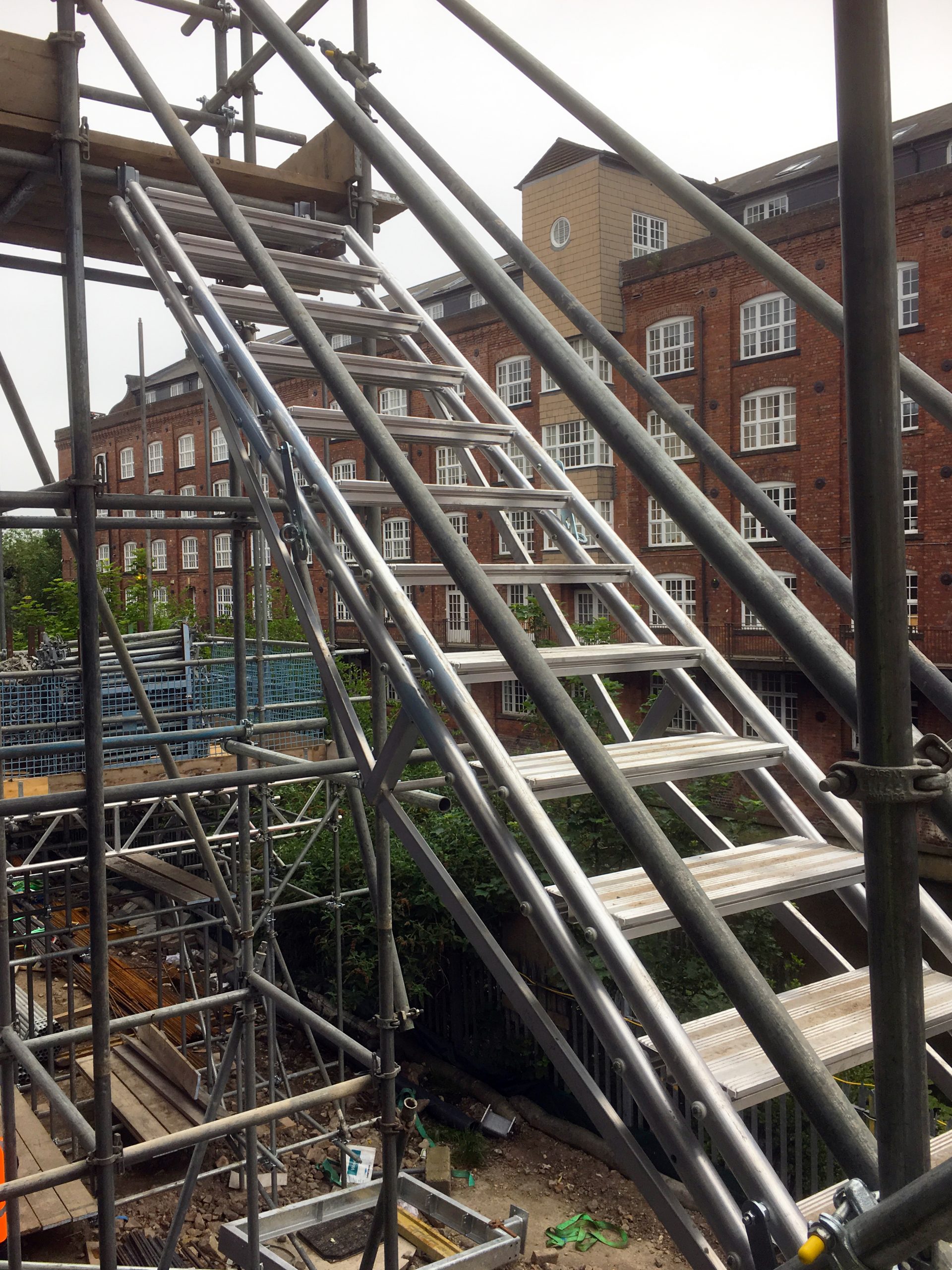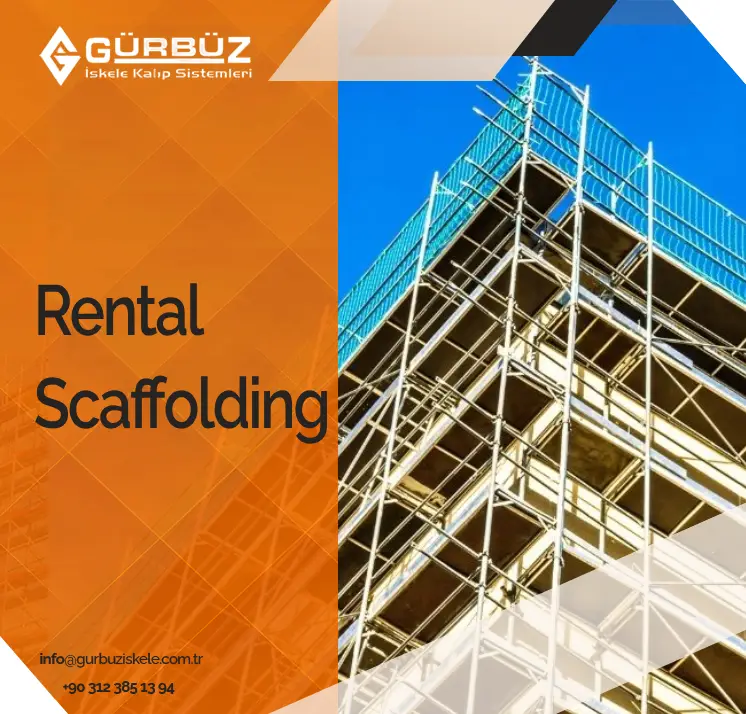Scaffolding in High Winds: Safety Measures and Tips
In high winds, focus on scaffolding security with wind lots estimations and appropriate layout. Assurance protected anchoring utilizing techniques like ground screws and tie-downs. Routine evaluations and upkeep checks are crucial for safety and security. Furnish employees with vital PPE and safe tools and materials. Establish emergency situation feedback procedures, consisting of training and communication plans. An in-depth scaffold safety and security strategy boosts preparedness. Alleviate dangers via normal drills and technique. Improve safety by knowing emptying paths and designating emergency situation leaders. For an extensive understanding of scaffolding safety in high winds, follow these standards.
Wind Rating for Scaffolding
When evaluating the wind ranking for scaffolding, it is very important to take into consideration the architectural stability and security of the scaffolding system under various wind rates. Scaffolding design plays a considerable duty in identifying its ability to endure varying wind loads. Proper wind lots estimations are vital to assure that the scaffolding can safely support employees and materials in gusty problems.
The layout of the scaffolding need to take into consideration aspects such as the elevation of the structure, the spacing of cross dental braces, and the kind of materials used. These aspects add to the total stability of the system when revealed to wind pressures. Wind tons calculations entail assessing the wind stress on the scaffolding based upon variables like the geographical place, typical wind speeds, and the surface of the framework.
Appropriate Anchoring Techniques
When establishing scaffolding in high winds, proper anchoring techniques are important to guarantee security and safety and security. Safe base assistance, wind-resistant tie-downs, and routine evaluation checks are bottom lines to ponder for efficient anchoring.
Safeguard Base Support
Making use of efficient securing strategies is important for guaranteeing the security and safety and security of scaffolding in high winds. Base stability is vital in holding up against the pressures put in by strong winds. Correctly securing the scaffolding to a solid foundation, such as a concrete slab or durable ground, aids disperse the wind force and stop tipping or breaking down.
The assistance framework must be securely secured to the base to enhance wind resistance. Supports like screw-in ground anchors or heavy weights can be utilized to enhance the scaffolding’s stability. By making sure a safe and secure base support with ideal securing techniques, the scaffolding comes to be a lot more resistant versus wind pressures, lowering the danger of mishaps and improving overall security on the worksite.
Wind-resistant Tie-downs
To enhance the stability and wind resistance of scaffolding in high winds, carrying out wind-resistant tie-downs through proper anchoring techniques is vital. Tie-down effectiveness is important in assuring the scaffolding can withstand solid winds.
Utilizing wind-resistant materials for tie-downs, such as durable bands or cable televisions, can substantially boost the general security of the structure. When securing the scaffolding, it is necessary to secure the tie-downs to stable and immovable frameworks, such as the building itself or ground supports.
Appropriate tensioning of the tie-downs is also essential to prevent any slack that could compromise the effectiveness of the anchoring system. By utilizing wind-resistant tie-downs and following correct anchoring methods, the scaffolding can better hold up against high winds and make certain a much safer work environment.
Normal Inspection Checks
Regular inspection checks play a critical role in guaranteeing the correct anchoring strategies of scaffolding are maintained to stand up to high winds efficiently. Evaluation regularity should follow safety and security criteria, which normally need evaluations before initial use, after any event that can influence stability, and at routine intervals afterwards.
These checks ensure that anchoring systems are secure, connections are limited, and components are without damages or destruction. Evaluations should include verifying the honesty of tie-down points, ensuring appropriate tension in tie-down systems, and examining the problem of support bolts or screws.
Any type of problems recognized during evaluations need to be promptly addressed to prevent architectural failings and guarantee the security of workers and the public.
Inspection and Maintenance Protocols
Upkeep routines need to be purely followed in order to ensure the architectural stability of scaffolding in high wind problems. Routine inspections are necessary to identify any issues immediately and guarantee the safety and security of employees. Below are bottom lines to consider:
Maintenance Set Up: Establish a complete upkeep routine that includes regular look for damage, deterioration, and architectural security.
Inspection Checklist: Use a detailed evaluation list that covers all vital components such as joints, links, and base plates.
Security Training: Guarantee that workers carrying out evaluations are adequately learnt scaffold safety and assessment methods.
Equipment Testing: Conduct routine testing of devices such as guardrails, toe boards, and tie-offs to validate their efficiency.

Individual Safety Equipment (PPE)
Individual Protective Tools (PPE) is vital for making certain the safety of workers on scaffolding, specifically in high winds. This consists of tools such as hard hats, gloves, harness, and non-slip shoes.
Correct upkeep and routine inspections of PPE are important to assure their efficiency in protecting employees at elevated heights.
Important PPE for Employees
Employees participating in scaffolding activities in high winds have to be furnished with essential Personal Safety Equipment (PPE) to assure their safety at work site. The following PPE is vital for employees in such problems:
- Construction hats to safeguard the head from falling items
- Harness to avoid falls from heights
- Safety and security goggles to shield the eyes from particles and wind
- High-visibility vests to guarantee exposure in low-light and high-wind scenarios
Appropriate upkeep of PPE is important to guarantee its efficiency, and tool security steps need to be in location to prevent items from diminishing scaffolding, endangering workers listed below. By prioritizing using suitable PPE, employees can reduce threats and work safely in difficult settings.
Appropriate PPE Maintenance
To ensure the efficiency of safety gear, regular assessment and upkeep of the important equipment made use of by people in high-wind scaffolding atmospheres is vital. Routine PPE evaluation is vital to make certain that the gear remains in great condition and supplies the necessary defense.
Security standards suggest checking for any type of indications of damages, such as splits, fractures, or damaged straps, and quickly changing any kind of endangered devices. In addition, correct storage of PPE when not being used is basic to stop deterioration and preserve its effectiveness.
Regular cleansing and upkeep complying with supplier directions can aid extend the lifespan of the gear and make sure that it operates as planned in high-wind conditions, securing workers from prospective threats.
Securement of Devices and Products
Making certain that tools and materials are appropriately safeguarded is crucial when servicing scaffolding in high winds to avoid mishaps and keep a secure workplace. Appropriate tool organization and product storage space techniques play an essential duty in stopping objects from coming to be harmful projectiles. Furthermore, normal tools maintenance is critical to assure devices remain in good working condition and less likely to malfunction in challenging climate condition. Security training is likewise important for all workers involved in scaffolding jobs, as it furnishes them with the understanding and skills needed to take care of devices and products securely even in adverse weather condition.
- Protect Devices: Use device belts or tethering systems to stop tools from dropping.
- Secure Product Storage Space: Stack materials firmly to prevent them from being surprised.
- Normal Devices Checks: Examine tools consistently to recognize and deal with any type of concerns immediately.
- Comprehensive Security Training: Guarantee all workers are trained in appropriate tool handling and storage space treatments to reduce risks.

Emergency Response Procedures
In the event of unanticipated emergencies while working on scaffolding in high winds, swift and well-coordinated action treatments are important to assure the safety and security and wellness of all people involved. Carrying out normal emergency drills can aid acquaint employees with evacuation treatments and guarantee a fast and reliable action in situation of emergencies. It is important for all employees to be well-versed in the evacuation routes and setting up indicate assist in a smooth and orderly discharge procedure. Additionally, marking details individuals to take charge throughout emergency situations and connect instructions clearly to all workers can help avoid panic and complication.
Emergency situation feedback treatments ought to be clearly detailed in the scaffolding safety and security strategy, detailing step-by-step directions on exactly how to react to different types of emergencies, such as high winds, devices failing, or medical events. Frequently examining and exercising these procedures can assist ensure that all workers are prepared to respond successfully in high-stress scenarios. By focusing on emergency situation preparedness and reaction training, employees can reduce threats and boost general security when working on scaffolding in high winds.
Frequently Asked Questions
Can Scaffolding Be Utilized in Extreme Weather Condition Issues Such as Hurricanes or Tornadoes?
Scaffolding ought to not be utilized in severe weather conditions like hurricanes or tornadoes due to safety risks. Emergency situation protocols must remain in place, and utilizing wind-resistant products can reduce possible risks connected with solid winds. https://southkensingtonscaffolding.co.uk
Are There Any Kind Of Specific Weight Limits for Scaffolding in High Wind Locations?
Weight limitations and wind stability are vital factors in making certain the safety and security of scaffolding in high wind areas. These limitations vary based on the scaffolding kind and style. Adhering to producer guidelines and industry requirements is essential.
Exactly How Often Should Scaffolding Be Checked for Wind Damage?
Constant wind damage assessments are essential to assure the security and integrity of scaffolding frameworks. Assessments should be carried out at the very least once a week or after any type of significant weather condition event to identify and attend to prospective dangers promptly.
What Sort Of Personal Safety Tools (Ppe) Is Advised for Servicing Scaffolding in High Winds?
When working on scaffolding in high winds, it is vital to focus on security by putting on proper personal safety devices (PPE) such as safety helmets, harness, and non-slip footwear. Carrying out these safety measures can assist stop mishaps and warranty tool safety and security.
How Should Tools and Materials Be Protected on Scaffolding to avoid Them From Being Blown Away in Solid Winds?
To avoid tools and materials from being blown away in solid winds on scaffolding, secure them using proper device organization strategies and wind-resistant attachment techniques. Applying precaution such as tethering devices and weighting down products can reduce dangers.
Final thought
To sum up, guaranteeing the safety and security of scaffolding in high winds needs adherence to wind score guidelines, proper anchoring strategies, normal assessment, and upkeep.
It also includes the use of individual protective equipment, securement of tools and materials, and knowledge of emergency response treatments. By adhering to these safety measures and pointers, workers can minimize the risk of accidents and injuries while working on scaffolding in gusty conditions.